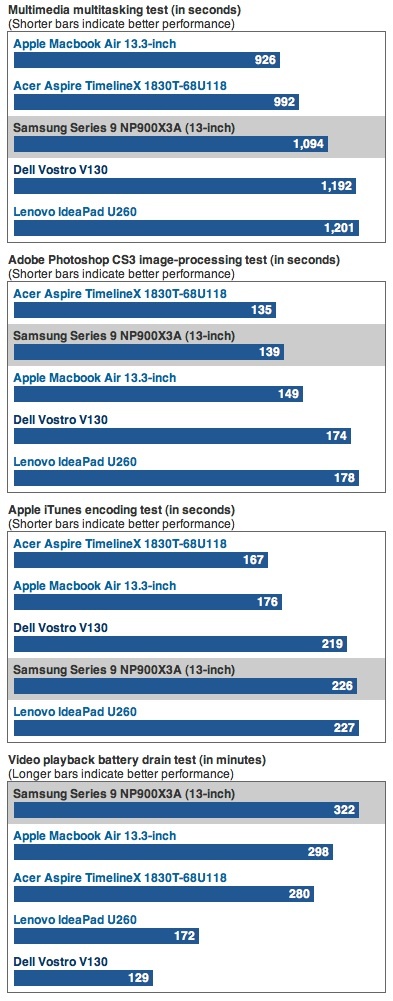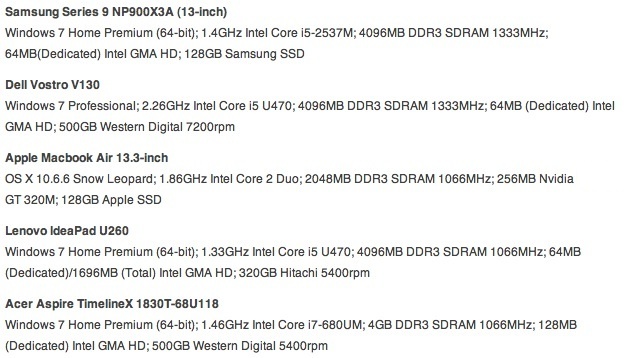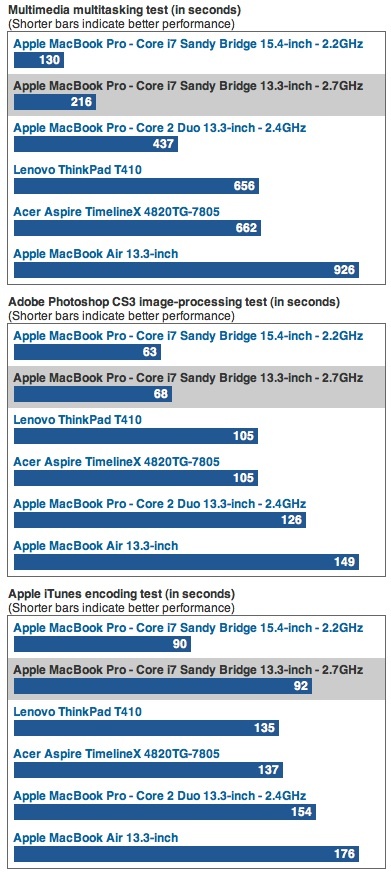Apple is expected to update the MacBook Air (MBA) this summer with Intel’s “Sandy Bridge” processor, as CNET has reported. And there’s really only one question on most people’s minds: what kind of performance will a new MBA get you? (We already know more or less what the price will be.)
Luckily, there’s some circumstantial evidence out there now. Exhibit A is the ultrathin Samsung series 9 NP900X3A and recent CNET benchmarks.
Why this laptop? It uses Intel’s latest ultra-power-efficient 1.4GHz Intel Core i5-2537M Sandy Bridge chip–the same kind of low-power silicon the upcoming 11.6-inch Air is expected to use.
That said, let’s get the caveats out of the way first. The Samsung configuration tested uses 4GB of memory, while the tested 2010 Air uses 2GB. Another proviso applies to Intel’s Sandy Bridge HD 3000 graphics (which the 2011 Air will likely use). Here’s what CNET Reviews’ Scott Stein said: “these graphics are better than were ever possible on thin-and-lights using last year’s Intel integrated graphics, but they’re not quite as good as the Nvidia GeForce 320M graphics on the [current] MacBook Air.”
And the benchmarks bear this out in some cases, as shown in the charts below.
But those aren’t the only relevant benchmarks. The Sandy Bridge-packing 13-inch MacBook Pro (MBP) shows the performance that a mainstream Sandy Bridge processor can deliver and may approximate a future 13-inch MacBook Air.
Why is it comparable? That MBP model comes with Intel HD 3000 graphics and is, therefore, indicative of the performance of a 13-inch Sandy Bridge MacBook Air. (The 15-inch MacBook Pro employs AMD Radeon graphics and is not a good yardstick.)
The question is, how far will Apple push the performance envelope on the Sandy Bridge 13-inch Air to get it close to the MacBook Pro 13-incher? In trying to answer that question, let’s not forget that Apple currently uses a relatively fast low-power Core 2 Duo processor in the top-line Air: the SL9600 running at 2.13GHz with 6MB of cache memory.
So, what might be a suitable follow-on to that chip? Intel is now shipping the Core i7-2649M (4M Cache, 2.30 GHz) which, at 25 watts, is a power-efficient chip but not as power-frugal as the 17-watt ultra-power-efficient Core i5 Sandy Bridge used in the Samsung Series 9. The point: higher wattage typically means better performance.
As we know, moving Intel’s Sandy Bridge chip into the MacBook Air would finally break a processor logjam that’s existed for more than three years now. Though the Air has been updated several times over the last three years, it has stuck to the same basic Intel chip technology since its inception in 2008.
Related, Imp0rtant, Recent P0sts;
– Future MacBook chips will look like this
– New MacBook Pros with upgraded designs, Cheaper iMacs with new screen sizes in 2011>
– Tri-SIM Card Adaptor for iPhone 4
– How To Unlock iPhone 4, 3GS on iOS 4.3.1 with Ultrasn0w 1.2.1 [Guide]
– How to import photos into iPhoto 11 on a Mac
F0r M0re UpDaTing:
Be 0ne 0f My New F0ll0wers 0n Twitter,
0ne 0f My New Fan 0n FaceB00k,
And Here Is The Feeds.







